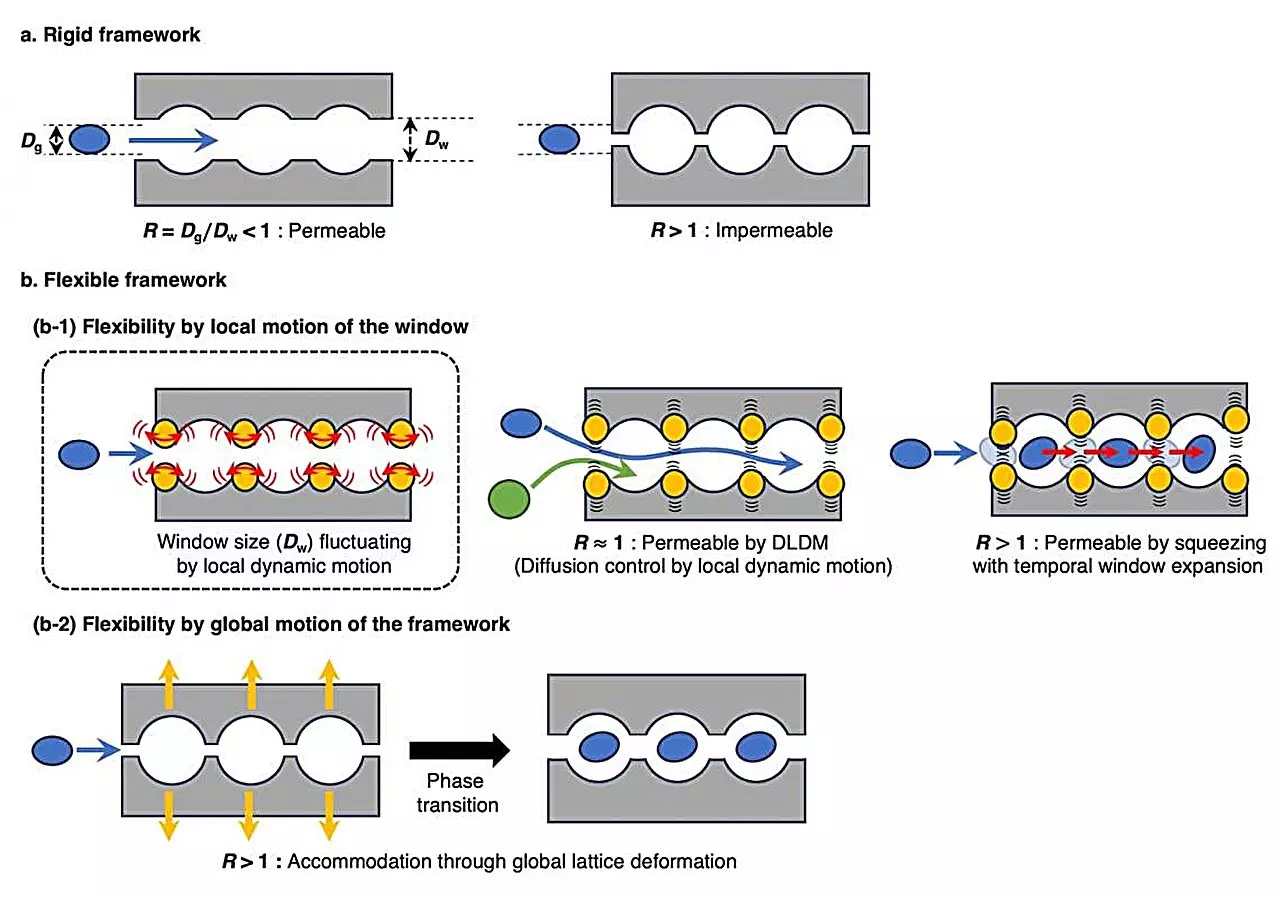Recent advancements in the study of porous coordination polymers (PCPs), commonly referred to as metal-organic frameworks (MOFs), have significantly illuminated our understanding of these materials. A groundbreaking paper published in *Communications Materials* sheds light on the historical evolution of PCPs, particularly focusing on an early instance of these materials developed in 1997. Contrary to the prevailing belief that ‘soft’ PCPs—those capable of adjusting their structure in response to external conditions—were a more recent innovation, this research reveals that even the initial PCPs possessed this flexibility. By examining the molecular properties of these materials through modern analytical techniques, researchers have provided a fresh lens through which we can view the progression of gas storage technologies.
PCPs are fascinating due to their structural makeup, which consists of a network of metal ions interconnected by organic molecules creating a plethora of nanosized pores. This inherent porosity allows PCPs to trap, store, and release gases and liquids, rendering them pivotal for numerous applications across various industries. “Think of a PCP as a sponge designed to absorb gases,” describes Susumu Kitagawa, the lead researcher at the Institute for Integrated Cell-Material Sciences at Kyoto University. By functioning meticulously like a sponge, these materials can fill roles from clean energy storage, particularly hydrogen, to environmental monitoring through gas detection.
The unique adaptability of soft PCPs opens a plethora of possibilities in both industrial and environmental contexts. For instance, in energy applications, the capacity of these frameworks to flexibly adjust their structure means they can efficiently store gases essential for sustainable practices or serve as selective filters to manage emissions in industrial processes.
In their pursuit of understanding the gas adsorption capabilities of early PCPs, the research team employed sophisticated techniques, notably single-crystal X-ray diffraction. This method enabled them to dissect the atomic arrangements of the PCP structures and observe changes upon interaction with gases. The study’s primary focus was on cobalt’s PCP, specifically Co-TG, which has been recognized for over two decades as an effective gas-capturing material.
New findings indicate that not only does Co-TG adeptly trap gases, but it also possesses the ability to slightly modify its structure, enhancing its gas-holding capacity. Ken-ichi Otake, a contributor to the study, highlights, “These early PCPs showcased remarkable qualities we had previously overlooked.” Recognizing the ‘softness’ of these initial frameworks keenly underscores the need for re-evaluating historical scientific data using contemporary technology.
By reframing our understanding of how early PCPs functioned, this research opens doors to potential innovations in various fields, such as gas storage and separation technologies, methods for carbon dioxide capture, and advancements in energy systems, particularly regarding more efficient hydrogen fuel cells. The researchers argue that acknowledging the foundational contributions of earlier materials provides valuable lessons for future explorations in material science.
Kitagawa remarks on the importance of re-examining prior scientific knowledge to glean fresh perspectives that can reinvigorate established domains. This approach pushes the boundaries of our comprehension of gas storage materials and will likely influence ongoing research and application design, prompting scientists and engineers to revisit and reassess previously well-studied materials.
This pioneering research emphasizes the elegance of looking back at established scientific frameworks and recognizing their overlooked features. The concept of ‘soft’ PCPs not only reshapes the narrative surrounding gas storage materials but also serves as a reminder of the intricate relationships between historical knowledge and contemporary innovation. By revisiting and analyzing the properties of early materials, researchers can foster advancements that transcend our existing technological capabilities, potentially resulting in groundbreaking solutions for industry-wide challenges in gas storage and environmental management. The evolution of these materials marks a significant stride toward sustainable practices, indicating that what was once considered history can offer invaluable lessons for the future.


Leave a Reply